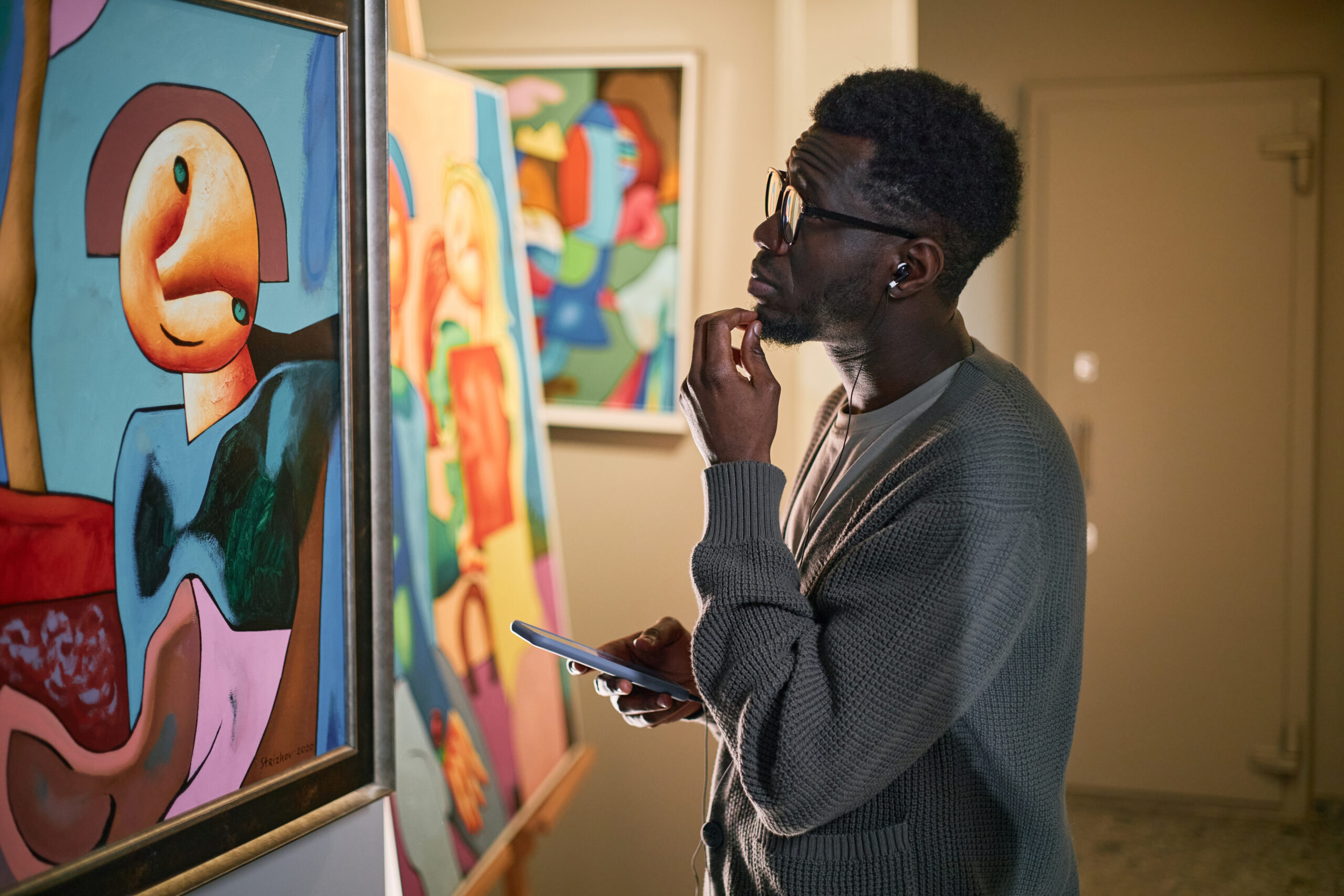By Marybeth Lebo
As an art educator, I’ve always believed that teaching students to create isn’t just about improving their painting skills or understanding color theory. Art is about helping them understand themselves—and others—on a deeper level. Over the years, I’ve seen firsthand how art education shapes emotional intelligence, giving students tools that extend far beyond the canvas.
Art as a Safe Space for Self-Expression
For many students, especially those who may be shy or unsure of themselves, the art room becomes a sanctuary. It’s a place where they can put their feelings into shapes, lines, and colors instead of words.
When a student is painting or sculpting, they’re not just making something—they’re processing emotions. Whether they’re working through joy, sadness, or frustration, the act of creating gives them a safe outlet. This freedom to express themselves without judgment builds self-awareness, one of the key pillars of emotional intelligence.
I remember a quiet student named Emily who barely spoke in class. When we started a self-portrait project, her work exploded with vibrant colors and powerful brushstrokes. It was her way of saying, “This is me”—without having to say a single word.
Building Empathy Through Creative Work
Art doesn’t just help students understand themselves—it helps them understand others. When students share their work and explain the story or emotion behind it, their peers begin to see the world through someone else’s eyes.
Group projects in art class are especially powerful for developing empathy. Students must collaborate, compromise, and appreciate different perspectives. I’ve seen arguments over creative direction turn into meaningful conversations about understanding and respecting another person’s vision.
Art invites us to slow down and listen, not just to what someone says, but to the emotions they’re communicating visually. This deepens interpersonal skills that will serve students for a lifetime.
Confidence Grows One Brushstroke at a Time
There’s a magical transformation that happens when a student completes a piece they’re proud of. You can see their posture change, their eyes light up—they’ve proven to themselves that they can create something meaningful.
Confidence doesn’t come overnight. It builds with every sketch, every experiment, and even every “mistake” that turns into something unexpectedly beautiful. In art, we learn that there is no single “right” answer, which is incredibly empowering for students who might struggle in more rigid academic subjects.
One of my favorite moments as a teacher is watching a student present their work to the class. You can see them go from nervous to proud as they realize their classmates are genuinely impressed. That pride carries over into other areas of their life—helping them speak up more in discussions, try new things, and believe in their own abilities.
Problem-Solving and Resilience Through Creativity
Art education teaches resilience in a way few other subjects can. Every artist knows the frustration of a piece not turning out the way we imagined. In the classroom, I encourage students to see these moments not as failures, but as opportunities to problem-solve.
If the colors aren’t working, we try a new palette. If a sculpture collapses, we rebuild it stronger. These small creative challenges mirror the bigger challenges students will face in life. Learning to adapt and persist builds resilience—a core component of emotional intelligence.
Over time, students begin to approach problems with curiosity instead of fear. They start asking, “What can I do differently?” rather than, “Why did I fail?” That shift in mindset is transformative.
The Lifelong Benefits of Emotional Intelligence
Emotional intelligence isn’t just a “nice to have” skill—it’s essential for navigating the world successfully. Students with high emotional intelligence are better at managing stress, communicating effectively, and building healthy relationships.
Art gives them daily practice in these skills. They learn patience while waiting for paint to dry. They learn empathy by interpreting another student’s work. They learn confidence by taking creative risks and seeing them pay off.
Even for students who don’t pursue art professionally, these lessons carry forward. They may become engineers, nurses, business leaders, or parents—but they’ll carry with them the emotional awareness and resilience they built in the art room.
Why We Need to Protect and Support Art Education
Sadly, art programs are often the first to face cuts in schools. Yet, if we truly value the emotional and mental well-being of our students, we should be protecting and expanding these programs, not reducing them.
Art education is more than a “fun extra.” It’s a vital tool for developing well-rounded, emotionally intelligent individuals. By investing in art programs, we’re investing in a generation of empathetic, confident, and resilient people.
I’ve seen too many success stories to believe otherwise. From the shy student who found her voice in a self-portrait, to the group that learned to respect each other’s ideas through collaboration—these moments prove that art changes lives.
Final Thoughts
Art education shapes far more than technical skill. It builds self-awareness, empathy, confidence, and resilience—all the key elements of emotional intelligence.
When a student picks up a paintbrush or starts sketching on a blank page, they’re not just making art—they’re building the skills they’ll need to navigate life with understanding, compassion, and courage.
From canvas to confidence, the journey is about more than what’s created in the classroom. It’s about who the student becomes in the process.
